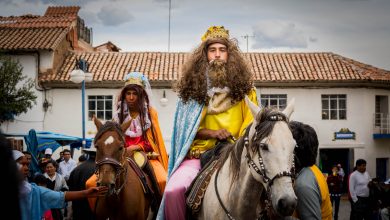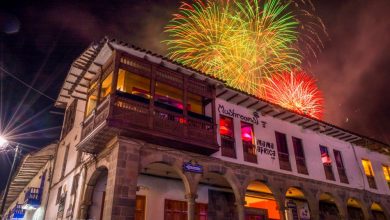
The creation of this Inka Park in Qolqanpata, one of the oldest districts of Cusco, is an initiative of the people of Cusco. This project has been carried out for two years approximately and these days the final touches to the place are being made in order to make it available to local and international tourism.
The project is divided into three stages:
The first stage, which is already ready, occupies the whole slope of the area where the current Salesian school is located. In the second stage, you will be able to cross the Qhapaq Ñan route or Inca road and visit the qollqas, storage buildings for agricultural produce. It will also include workshops of painting and dance where tourists will be able to participate in these activities. The third stage will reach the entrance of the Archaeological Center of Saqsayhuaman.
At the entrance of this Inca Park, we find a control booth where we have to register to enter. At this point, we are given a guide in the Spanish or English languages who will be responsible for showing and explaining the attractions of the place and make the visit more pleasant.
Beginning the tour with the guide Angélica Huamán, a very kind and well prepared person, we appreciated 13 small houses decorated in a traditional way in order to avoid altering the place’s attraction. In each of these houses will be exhibited handicrafts and textiles from the 13 provinces of the department of Cusco.

The path is really attractive. Even the garbage receptacles are very well done in a handmade way using branches of trees. In this first part, you can see platforms where different plants have been planted, including medicinal plants, ornamental plants, including plants that otherwise you will not see today in the city’s gardens of the city. These are plants threatened with extinction, for example the retama.
Later, an orchid garden and a butterfly garden will also be available for tourism. There you can appreciate the huaytampo or Cusco butterfly.
Continuing the tour, we will see the llama and alpaca sector. Here, the tourists will be able to feed these animals and learn to differentiate them.
Passing this sector, we will stop to see the process of the distillery of muña, a native plant, where we will taste a delicious tea from this ancestral plant.
Another thing that draws attention is the textile center, where you will find weavers from the the community of Parobamba. They will demonstrate the process of weaving in the traditional way, just as was done in Inca times using plants, insects, and stones for give the original color to the fabrics, all with the purpose of preserving the Inca legacy.
All the weavings that are here in the showroom, which are also on sale, are textiles recognized by UNESCO who guarantees the originality of the product.
Continuing our journey we arrive at a point where we marvel at an amazing replica of the bridge of Q’eswachaca, an Inca bridge that is renewed every year. You will be able to cross this replica Inca bridge and feel what our ancestors felt when passing over it. Once you have finished this adventure, we will visit a library where we find many botanical books on plants and their medicinal properties, as well as a great variety of dissected plants. This is a world in which anyone who wishes can submerge themselves and find lots of knowledge. 
The other room we recommend you visit is the room of popular contemporary art. Here we find art exhibitions of recognized Cusco artists who through their art reflect the reality of our society. Another important room is the room of chaquit’acllas, digging sticks or foot plows. There you will see a variety of these instruments that date from the Inca period and today are still used in different farming communities for agriculture. Not least is the room musical instruments.
After our visit to these outlets we appreciate something wonderful, the fish sector. Several aquariums display fish from different regions and different climates. This is a very attractive sector for lovers of the marine world.
Continuing on, we will visit the sector of smaller animals. Here we can see the small black goat called Pancho, Chilean roosters and hens, ducks, pigs etc. At the end of this sector, we will stop at an aqhawasi, or house of the chicha, the corn beer that was sacred in Inca times. Here we can taste the chicha and sometimes the mote, which is the boiled corn. This is a common food in traditional houses. We will also see guinea pig houses, always found in the chicherias, also called aqhawasis. To finish our route of this first stage, we appreciate a sample of our varieties of corn and varieties of the potato together with a view of the city of Cusco.
The opening hours of this wonderful Inka Park is from 9:00 am to 6:00 pm. Everyone is invited to be part of this wonderful experience.




